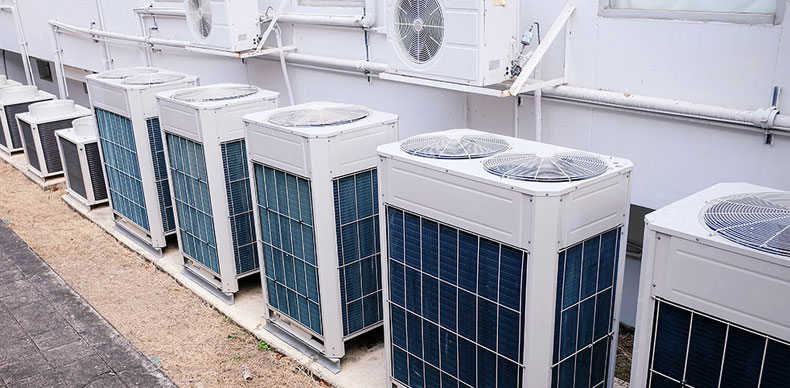WHAT'S THE DIFFERENCE BETWEEN VRV/VRF HVAC SYSTEMS?
How does HVAC work for you? You set it at a temperature based on your personal preference, it cools or heats your home to that temperature, at that point it cycles down, correct? At that point, when the house begins to heat up or cool down once more, it cycles back on. Pretty, simple right? All things considered, this straightforward method of activity is positively a reliable manner by which to manage the temperature in one's home.

Like whatever else, however, we've seen some headway in innovation with regards to HVAC system activity throughout the long term. If you've been exploring your heating and cooling alternatives of late, at that point you have presumably run over systems utilizing VRV or VRF technology. The advantages related with this technology are no uncertainty alluring, as they include improved comfort at a lower working expense.
WHY THIS TECHNOLOGY HAVE TWO TITLES?
When looking for new HVAC systems, it pays to be exhaustive. Now and again the entirety of the data that is out there can truly make your head turn. If you're feeling frustrated since you can't sort out what the difference among VRF and VRV systems, at that point we have uplifting news: there truly isn't one, past brand preference.
Comparable systems utilizing a similar technology, however produced by different companies, (for example, Fujitsu), are called VRF, or variable refrigerant flow systems. Since the topic of phrasing is far removed, we should investigate how these systems work.
Our services
Downloads
WHAT ARE THE ADVANTAGES OF VRF/VRV?
From zone control systems to ductless small scale parts, there are numerous manners by which property owners and directors decide to customize their heating and cooling systems to the changing necessities of their properties. Utilizing a VRF or VRV system is quite possibly the most creative and powerful approaches to do as such.
In conventional Sreewari Engineers, there is a solitary outside unit that interfaces with a single indoor unit. The refrigerant in the indoor "evaporator" coil vanishes, cooling the air for circulation all through the entire property. The hot refrigerant is then packed to deliver its heat. This occurs in the open air unit, and the cooling cycle proceeds until wanted temperatures are met.
The issue with this is that most properties are not only one huge space.There are different rooms all through the house or commercial property. Not every one of them are being used simultaneously, and not every one of them acquire (or lose) heat at similar rates. By blending an outside unit with numerous indoor units serving various regions of the property, the property owner can utilize a system substantially more productively and effectively.
In a VRF/VRV system, the system will recalculate cooling and warming requirements as various indoor units are controlled on or off. Essentially, the flow or volume of refrigerant needed to do the work successfully at some random time is in transition, and the system can make up for these varieties sought after.
This result in an exceptionally productive execution without sacrificing any measure of comfort, and that proficiency is just supported further with the guide of different technologies, for example, inverter technology that allows the blower to conform to heating and cooling requests for the duration of the day without closing down totally.